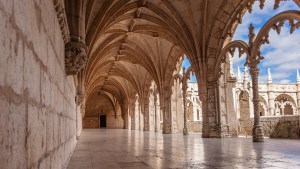Ongoing excavations at the Posa Monastery site in eastern Germany have revealed remarkable insights into the spiritual and architectural heritage of this historic site. Since 2017, dedicated archaeologists and volunteers have worked meticulously to uncover the layers of history buried beneath this ancient ground. Recent efforts have brought to light significant finds, including graves, a chapter house, and connections to an earlier 10th-century church.
As explained by IDW, the excavations have uncovered well-preserved remains of the Benedictine monastery founded in 1114, as well as evidence of a 9th- and 10th-century castle, including the foundation walls of a residential tower. This suggests that the original bishop’s castle of the 10th century was probably located on Posa Hill.

This year, the focus was on the northeast cloister, which has been the monks’ living area since the monastery’s founding. The team uncovered the floor plan of the Romanesque chapter house –an important meeting space for the monastic community. The room has undergone significant changes over the centuries, including the addition of a new vault and stone bench during the Gothic period. An ancient water pipe was discovered under the floor of the chapter house, confirming a historical document from 1186. This pipe, which carried water to the monastery kitchen and well house, highlights the sophisticated infrastructure that supported monastic life.
Further east, archaeologists have been investigating a section of the cloister dating from the mid-12th century. This area, built with high-quality sandstone masonry, revealed the burials of at least 15 individuals dating from the 12th to the 15th centuries. These graves tell a story of the evolving use of space and the practice of moving older remains to make room for new burials.
From the Ottonian castle complex, believed to be a bishop’s seat, archaeologists have unearthed two foundations of a narrow building that linked the residential tower, discovered last year, to the 10th-century church. Similar connecting structures have been found at several early medieval bishop seats, providing bishops with a sheltered walkway to their churches. Burials were also discovered within this Ottonian-period building, as these passageways were popular burial sites. Crossing the graves served as a constant reminder of the deceased. At Posa, these graves from the 10th and early 11th centuries were intricately constructed as brick burial chambers. An unusually high brick chamber in the southern cloister area, currently under investigation, was reused for a burial in the 15th century.



